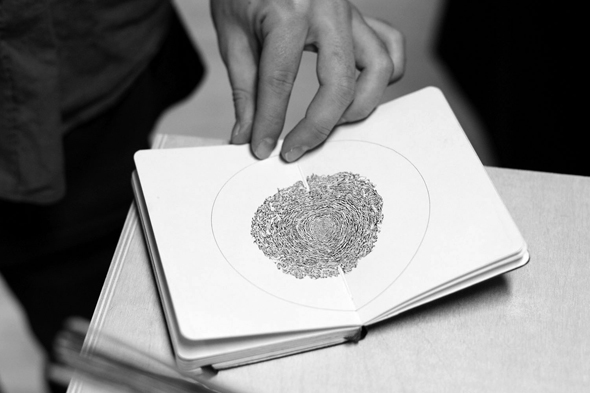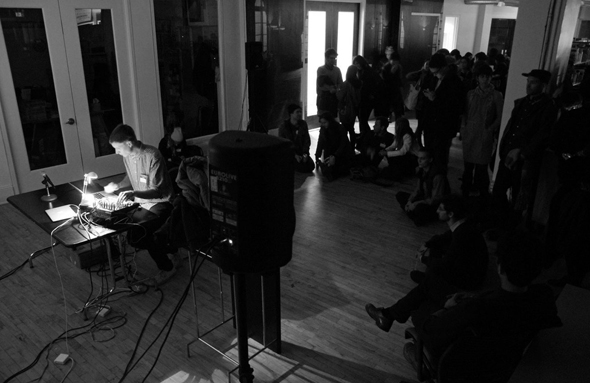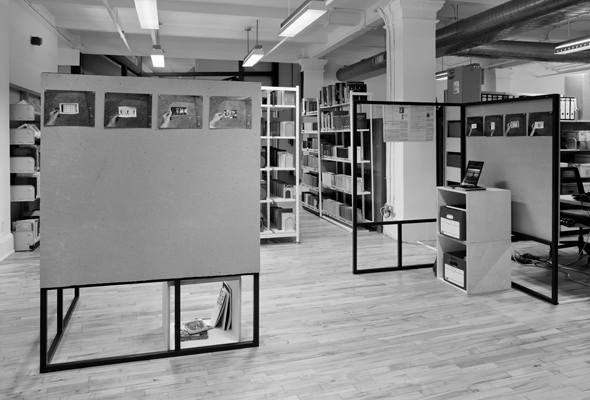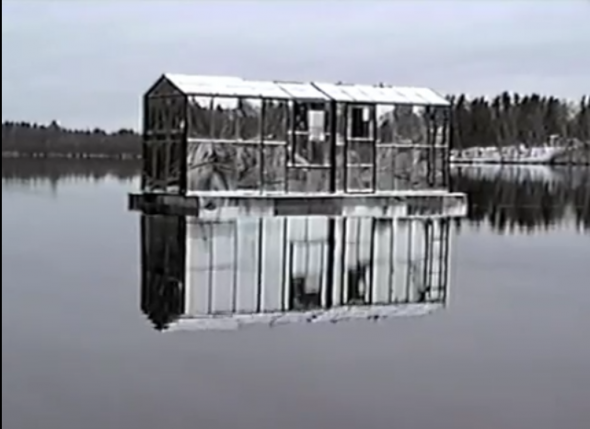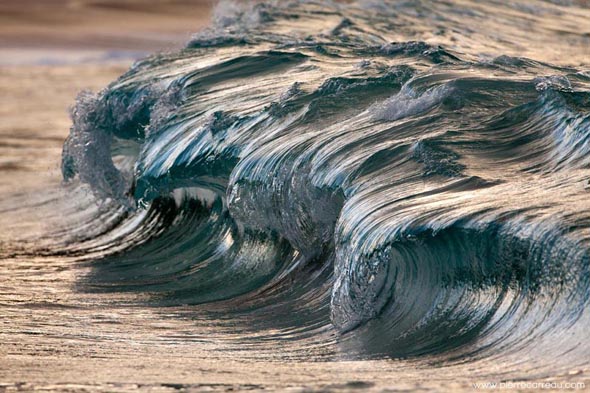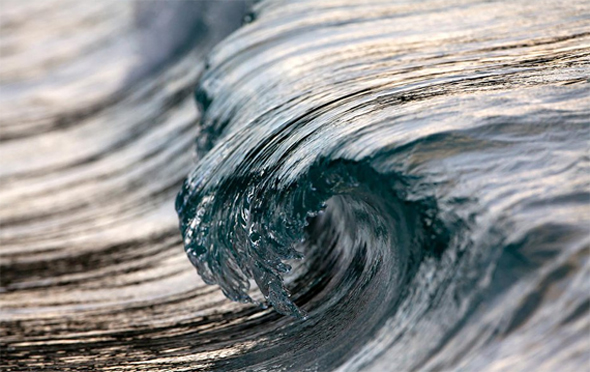Inspired by an unplanned 3-month search for quiet, Fix The Shadows is a traveling photo documentary project spearheaded by Warren. Showcasing both the aesthetic and process of a handful of fellow friends, artists, surfers, and photographers sharing ideas, cameras and cold empty waves along the coast of Maine. Equal parts surf film and behind-the-scenes look at artistic process, Fix The Shadows is worth the thirteen minute viewing time.
Blog
The Ends(s) of the Library
A library, like the Internet, is a constantly growing, endless entity, with new titles and media added daily. But the way we organize and collect the information within changes with the times, and it is with that in mind that the Goethe-Institut’s New York Library presents a show titled, “The End(s) of the Library.” Starting last November and ending in June, the exhibition is actually a continuing series of events and shows that aim to emphasize “the fact that the library is neither a monolithic system nor an abandoned utopia, but an ever-contested site demanding new readings of its organizational frameworks: an institution whose ends are without end.”
With that lofty goal in mind, they have passed the baton to Julieta Aranda, Fia Backström & R. Lyon, David Horvitz, Christian Philipp Müller, and The Serving Library to touch on everything from preserving an artist’s work to issues involved with digital rights and reappropriation. It’s not all panels and discussions though. The art and text itself is front and center in each event and showing, with the artist dealing with these issues in their own work as they display it and document the process. If it sounds confusing, the project’s website probably won’t clear things up, but it will most certainly draw you in with its vast range of content, as any good library should do.
Recalling 1993
The New Museum has come up with a unique way of promoting their latest show, “1993.” In an attempt to place potential viewers into a mindset of nostalgia and memory related to that specific year, they used one of the few relics of that time for their message’s medium: pay phones. Barely used today, the phone booths still linger on every block and corner, a subtle reminder of the city’s recent past.
For the campaign, dubbed “Recalling 1993,” the museum has recorded artists and residents from every neighborhood, each talking about their memories and recollections of 1993, specific to that neighborhood, and sometimes specific right down to the very block where the pay phone sits. Anyone is now able to walk up to these public pay phones and access these memories simply by dialing the number on the phone handle. It’s an ambitious project in and of itself. The very fact that they’re asking us to pick up a pay phone, something many of us haven’t done in years, adds layers of personal memories to the pre-recorded ones on the line. The participation becomes part of the experience, and is unique to each and every location. Check the map on the site for pay phone locations, or merely start wandering your neighborhood. You’ll be surprised how many there are once you start looking.
“Margarine and the Museum”
An excellent piece by Julia Langbein about her participation in (and critique of) “Feast: Radical Hospitality in Contemporary Art,” an exhibition held at University of Chicago’s Smart Museum last year. (The show is traveling to the Blaffer Museum in Houston (August 31, 2013 — January 5, 2014) and SITE Santa Fe (February 2014 — May 2014). A quick teaser:
Alhäuser asked the staff (aided by volunteers) to do everything but sculpt margarine. She needed caterers. So she turned the museum staff into a catering staff, who over the course of a work day assembled hors d’oeuvres for 400 people. We were asked to cut canapés and toasts, to shape marzipan from molds, to skewer chicken and peppers, melon and strawberry. In fact, much of what we did involved skewers, and “skewers” is a word designed to make German mouths flap and deflate like a balloon released.
“Skeeeuuusssssss?” Alhäuser ventured at the planning meeting a few days before the opening, tucking her chin down and scanning the museum staff for recognition.
“Skewers,” offered the Events Manager, who had spent the morning at Whole Foods buying “artists’ materials.”
“Skyeuuusssss,” said Alhäuser, reassured. A baby hung off her hip (the danger of exposure to margarine.)
I thought we were all in love with her at that moment—she is a warm woman with a wide smile whose work, after all, stages act after act of generosity—but I was wrong, because the night of the opening, the volunteers mostly bailed. Alhäuser had seen worse. At a summer event in Berlin four years ago—recounting this to me, she didn’t want to name names, given the hostility that had ensued—she had proposed an ice sculpture and when she showed up, there was no refrigerator.
DVF Loves Roxy
Props to DVF for highlighting surfers Monyca Bryne-Wickey and Kelia Moniz for a recent DVF Loves Roxy ad campaign. More photos from the Malibu shoot here. The boards are kind of great?
Pierre Carreau: Waves and Beaches
While spending time at Clic Gallery over the weekend I came across the incredible prints of French photographer Pierre Carreau. By taking hundreds upon hundreds of shots, Carreau has honed his craft to create isolated portraits of waves in which the light and nuances of each curve make them appear more like glass than water.
Born near Paris in 1972, Carreau has obsessed about the ocean since he was a child. For many years he shot for surf or kitesurfing magazines. According to his website: Pierre always says : “a photographer is literally someone who writes with light”. Carreau has lived on St. Barth since 2004 where he works commercially while also continuing his ongoing study of wave shapes, titled “AquaViva”.
Limited signed prints available at Clic Gallery.
contact: info@clicgallery.com
Abraham Cruzvillegas: The Autoconstrucción Suites
 Informed by the sociopolitical contexts of Latin America, Abraham Cruzvillegas has garnered much attention for his dynamic assemblage sculptures made of found objects. Interested in improvised building materials and techniques, he roots his sculptural practice within the urban landscape of his childhood home in Ajusco, a district in the south of Mexico City. Over the past 10 years, Cruzvillegas has developed a riveting body of work that investigates what he calls autoconstrucción, or “self-construction.” To this day, Ajusco’s landscape of volcanic rock remains a work in process, with structures in a constant state of transformation as additions are made when materials become available and necessity dictates. This way of constructing has become the basis of Cruzvillegas’ own thinking and methodology, while operating as a rich metaphor for the articulation of individual identity and place.
Informed by the sociopolitical contexts of Latin America, Abraham Cruzvillegas has garnered much attention for his dynamic assemblage sculptures made of found objects. Interested in improvised building materials and techniques, he roots his sculptural practice within the urban landscape of his childhood home in Ajusco, a district in the south of Mexico City. Over the past 10 years, Cruzvillegas has developed a riveting body of work that investigates what he calls autoconstrucción, or “self-construction.” To this day, Ajusco’s landscape of volcanic rock remains a work in process, with structures in a constant state of transformation as additions are made when materials become available and necessity dictates. This way of constructing has become the basis of Cruzvillegas’ own thinking and methodology, while operating as a rich metaphor for the articulation of individual identity and place.
Featuring 30 to 35 individual sculptures and installations, along with his recent experiments in video, film, and performance, Abraham Cruzvillegas: The Autoconstrucción Suites is the first major presentation to shed light on the artist’s unique vision and multifaceted practice.
March 23–September 22, 2013
Walker Art Center, Minneapolis, MN


